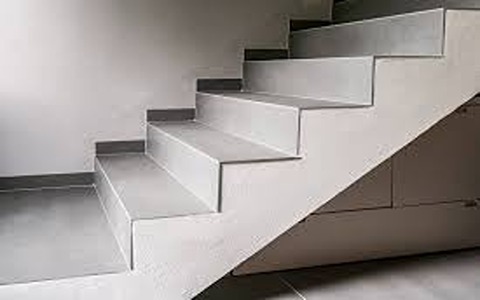This article will guide you on how to install ceramic tiles on your building’s stairs.

Stairs tiling is an innovative and uncommon approach to enhancing a hallway or outdoor space. Determine the length and width of each step to be tiled using a measuring tape.
In addition, measure the vertical length of the risers, which are the facing-your-feet back surfaces that make the steps ascend.
Multiplying the two dimensions together will get the needed square meters for the project.
When working with regions of irregular shape, it is advantageous to divide the area into a number of smaller segments that may be computed independently and then joined together.
Always reserve an additional 10 percent to accommodate for breakages, cuts, and waste.
It is suggested that 10-15% room be left between each tile when employing a brick bond pattern.

If you are unsure, you may simply take the dimensions (height and width) of each step you will be tiling to your local hardware store, where the staff will be able to provide you with guidance.
When selecting a floor tile for any purpose, the tile's adaptability and slip resistance should be given careful attention; this is especially crucial when tiling outdoor stairs.
Slip-resistant stair nosings may be installed as an extra safety measure.
Concrete must be at least six weeks old for the movement caused by drying shrinkage to have occurred.
The concrete must be level, clean, dry, and free of dust, laitance, and any other contaminants that might act as release agents and prevent the adhesive from sticking to the concrete.
If the concrete has a dusty look, the loose particles can be removed by dry brushing it with a wire brush.
Reduce the absorbency of the concrete and limit the dust by using a BAL APD primer that has been diluted with water 1 to 1.

Before commencing the tiling process, it is essential to ensure that the subfloor is dry.
If there is any doubt, a moisture level reading should be acquired to confirm.
Using a spirit level, ensure that the step is level, and if it is not, add an appropriate leveling compound; this will provide a professional finish.
If you like a neat finish on the edge of an outdoor step, you may wish to place bullnose tiles along the edge.

As long as the subfloor is properly prepared, tiles may be glued to almost any flooring substrate.


0
0